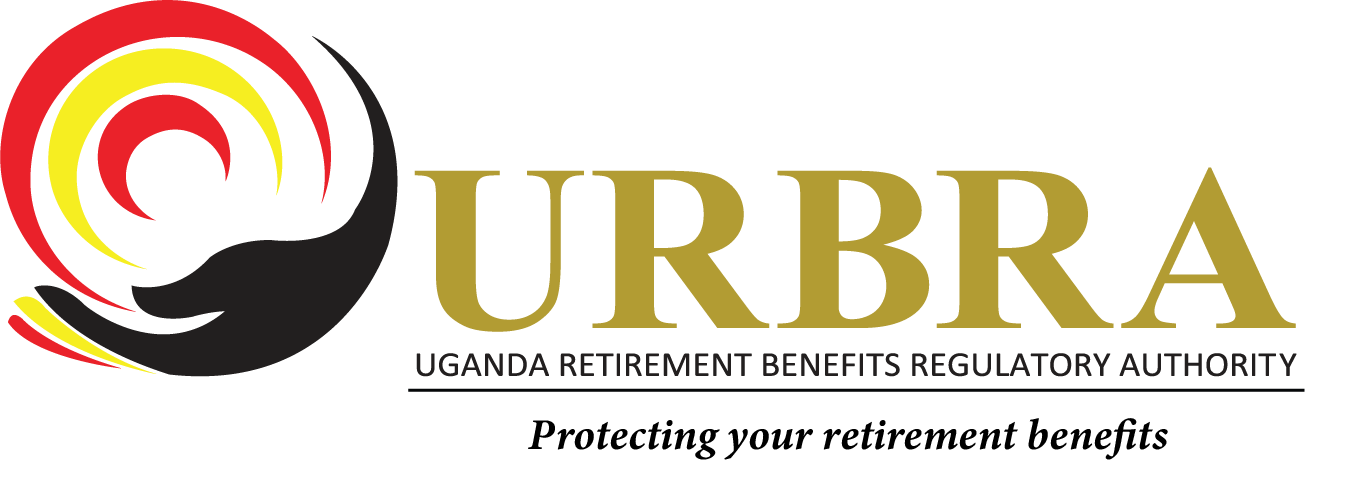Retirement Benefits Sector accounts for 12.2% of Uganda’s Gross Domestic Product (GDP)

Lydia Mirembe
Manager Corporate & Public Affairs
At the start of 2022, the Ugandan economy fully reopened after two years of lockdown owing to the Covid19 pandemic. Citizens were optimistic that business would pick up and the economy would shake off the negative effects of the pandemic. However, conditions didn’t improve that much. Commodity prices continued to rise, fuel prices didn’t go down as expected … a prolonged dry season and the Russia-Ukraine war didn’t help matters.

Despite the difficult conditions, the Retirement Benefits Sector experienced relative growth and contributed significantly to the national economy. The 2022 Annual Sector Performance Report recently issued by URBRA shows that sector assets grew from UGX17.8 trillion in FY 2020/21 to UGX19.9 trillion, accounting for 12.2% of Uganda’s Gross Domestic Product (GDP). The sector posted an average of 11.4% return on investment leading to a declaration of an average of 11% interest to members. The sector investment portfolio grew by 9%, from UGX17.9 trillion in FY2020/21 to UGX19.5 trillion in FY2021/22. Further improvement was observed in terms of contributions which grew from UGX1.7 trillion in FY2020/21 to UGX1.8 trillion in FY2021/22.
The increment in contributions was attributed to registration of new members, increase in contribution rates and payment of outstanding remittances. Contributions from employers accounted for 66.2% while that from employees accounted for 33.4% In terms of sector income, there was a 6% reduction from UGX2.1 trillion in FY2020/21 to UGX 2 trillion in FY 2021/22. This was mainly due to a fall in the value of share prices of listed equity that affected the value of investments and earnings. Despite the impressive performance, the sector still struggles with key challenges which, in the long run, impact the outcome enjoyed by savers. The number of savers remains low, despite the improvement from 2.8 million accounts in FY2020/21 to 3.02 million in FY2021/22.
There is need to extend coverage to include a broader section of the national workforce. The key issue here is that the labor market is largely informal, meaning that many of them are excluded from mandatory contribution to retirement benefits schemes. The challenge of scheme operation costs and transparency persists. Costs relating to operations and service providers have a significant impact on the adequacy of savings. Many schemes are set up without considering cost-efficiency, especially in relation to their membership and fund value. Additionally, there is no clear basis for service provider fees. Inefficiency also arises from inadequate disclosure. In the Sector At the start of 2022, the Ugandan economy fully reopened after two years of lockdown owing to the Covid19 pandemic.
Citizens were optimistic that business would pick up and the economy would shake off the negative effects of the pandemic. However, conditions didn’t improve that much. Commodity prices continued to rise, fuel prices didn’t go down as expected … a prolonged dry season and the RussiaUkraine war didn’t help matters. Despite the difficult conditions, the Retirement Benefits Sector experienced relative growth and contributed significantly to the national economy.
 The 2022 Annual Sector Performance Report recently issued by URBRA shows that sector assets grew from UGX17.8 trillion in FY 2020/21 to UGX19.9 trillion, accounting for 12.2% of Uganda’s Gross Domestic Product (GDP). The sector posted an average of 11.4% return on investment leading to a declaration of an average of 11% interest to members. The sector investment portfolio grew by 9%, from UGX17.9 trillion in FY2020/21 to UGX19.5 trillion in FY2021/22. Further improvement was observed in terms of contributions which grew from UGX1.7 trillion in FY2020/21 to UGX1.8 trillion in FY2021/22. The increment in contributions was attributed to registration of new members, increase in contribution rates and payment of outstanding remittances.
The 2022 Annual Sector Performance Report recently issued by URBRA shows that sector assets grew from UGX17.8 trillion in FY 2020/21 to UGX19.9 trillion, accounting for 12.2% of Uganda’s Gross Domestic Product (GDP). The sector posted an average of 11.4% return on investment leading to a declaration of an average of 11% interest to members. The sector investment portfolio grew by 9%, from UGX17.9 trillion in FY2020/21 to UGX19.5 trillion in FY2021/22. Further improvement was observed in terms of contributions which grew from UGX1.7 trillion in FY2020/21 to UGX1.8 trillion in FY2021/22. The increment in contributions was attributed to registration of new members, increase in contribution rates and payment of outstanding remittances.
Contributions from employers accounted for 66.2% while that from employees accounted for 33.4% In terms of sector income, there was a 6% reduction from UGX2.1 trillion in FY2020/21 to UGX 2 trillion in FY 2021/22. This was mainly due to a fall in the value of share prices of listed equity that affected the value of investments and earnings. Despite the impressive performance, the sector still struggles with key challenges which, in the long run, impact the outcome enjoyed by savers.
The number of savers remains low, despite the improvement from 2.8 million accounts in FY2020/21 to 3.02 million in FY2021/22. There is need to extend coverage to include a broader section of the national workforce. The key issue here is that the labor market is largely informal, meaning that many of them are excluded from mandatory contribution to retirement benefits schemes.
The challenge of scheme operation costs and transparency persists. Costs relating to operations and service providers have a significant impact on the adequacy of savings. Many schemes are set up without considering cost-efficiency, especially in relation to their membership and fund value. Additionally, there is no clear basis for service provider fees. Inefficiency also arises from inadequate disclosure in the sector.
In the Sector Performance Report, URBRA observes that reports submitted by schemes often lack notes or a breakdown of items disclosed in the components of financial statements. There is need to enforce compliance with the Authority’s disclosure requirements.
Other challenges observed include late and non-remittance of contributions; delays in payment of benefits to members; non-compliance with service level agreements; poor record keeping; failure to conduct performance evaluation of trustees and service providers; and failure to develop operational policies. All these can potentially impact the outcome enjoyed by scheme members.
Through its supervisory interventions, the Authority issued directives to schemes and service providers that failed to comply with the established laws and regulations. This resulted into the recovery of outstanding contributions to the tune of UGX3.6 billion; recovery of misappropriated funds worth UGX 80 million; and payment of outstanding benefits worth UGX257 million.
Going forward, at a sector level, all actors need to focus on the issue of coverage, preservation and adequacy in order to meet the main goal of retirement saving, which is to provide adequate income in old age. It is also important to re-think benefits design and lifetime income. There is need to develop proposals to offer pensions (income benefits) rather than lumpsum payouts currently offered.
Additionally, there is a need to limit the scale and scope of access to exceptional circumstances and introduce requirements for portability or transfer of retirement benefits between schemes.
In contribution to the continued growth of the sector, URBRA intends to strengthen and extend its supervisory reach; roll out a risk-bases supervision system; promote high standards of trusteeship and governance; invest in research and sector development to improve member outcomes; and accelerate public awareness and education to encourage more Ugandans to embrace retirement planning and saving.



